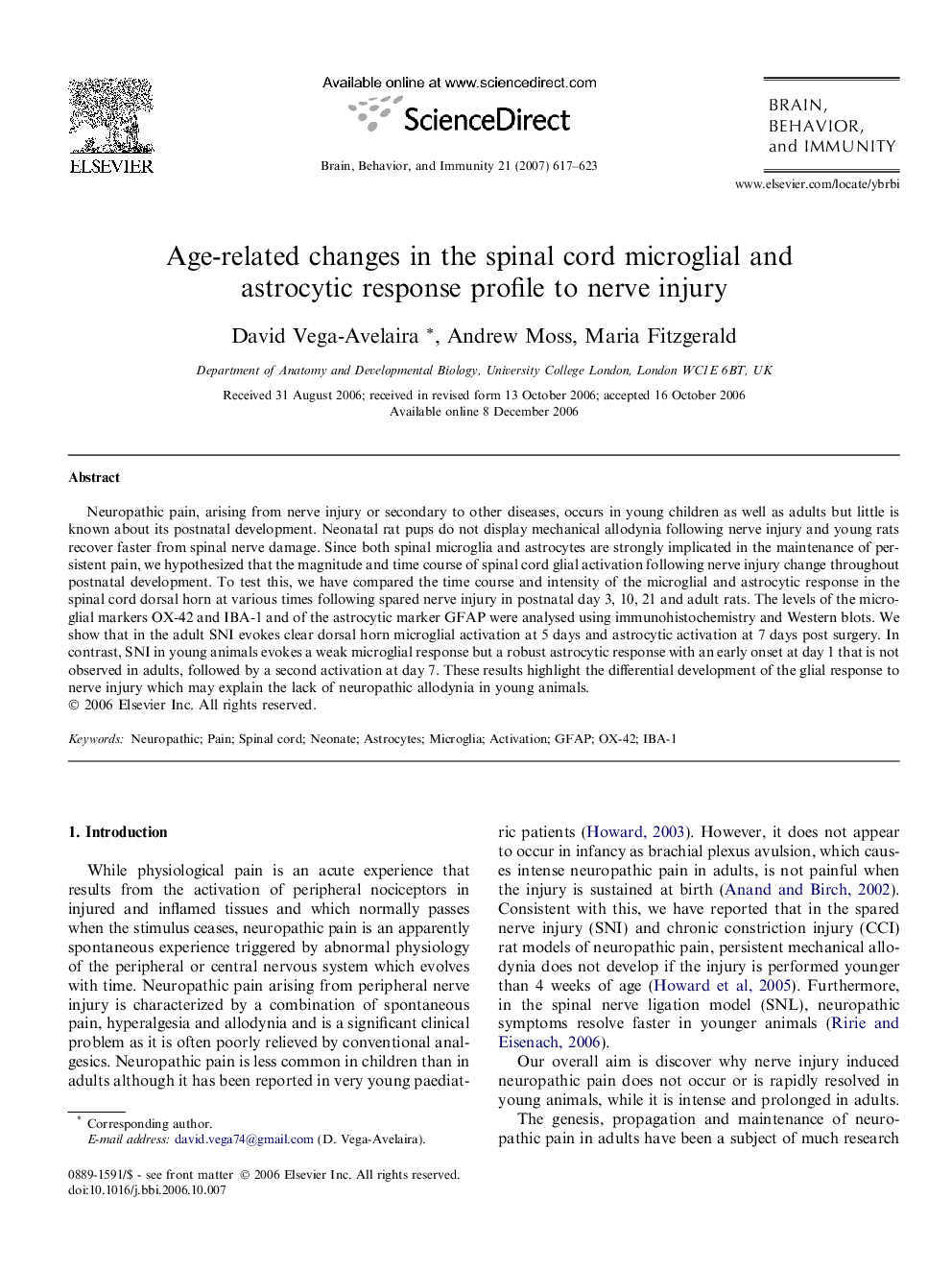| Article ID | Journal | Published Year | Pages | File Type |
|---|---|---|---|---|
| 923741 | Brain, Behavior, and Immunity | 2007 | 7 Pages |
Neuropathic pain, arising from nerve injury or secondary to other diseases, occurs in young children as well as adults but little is known about its postnatal development. Neonatal rat pups do not display mechanical allodynia following nerve injury and young rats recover faster from spinal nerve damage. Since both spinal microglia and astrocytes are strongly implicated in the maintenance of persistent pain, we hypothesized that the magnitude and time course of spinal cord glial activation following nerve injury change throughout postnatal development. To test this, we have compared the time course and intensity of the microglial and astrocytic response in the spinal cord dorsal horn at various times following spared nerve injury in postnatal day 3, 10, 21 and adult rats. The levels of the microglial markers OX-42 and IBA-1 and of the astrocytic marker GFAP were analysed using immunohistochemistry and Western blots. We show that in the adult SNI evokes clear dorsal horn microglial activation at 5 days and astrocytic activation at 7 days post surgery. In contrast, SNI in young animals evokes a weak microglial response but a robust astrocytic response with an early onset at day 1 that is not observed in adults, followed by a second activation at day 7. These results highlight the differential development of the glial response to nerve injury which may explain the lack of neuropathic allodynia in young animals.
